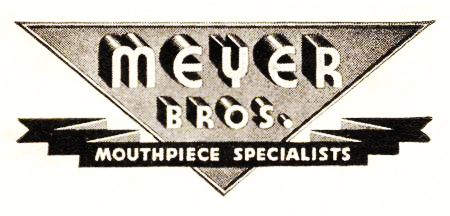Hello!
I have been having a nice conversation with GC in CT but I don't want to wear him out!
I have been experimenting with some mouthpieces...Here's the short version:
Playing a Meyer 6M.
Looking for easier high notes without losing too much warmth.
Tried a few but nothing that I really liked.
Thinking of trying a Meyer 7.
Questions:
The Meyer that I have (the one that says "Made in USA") comes in a small, medium or large facing. Can someone please tell me the pros and cons of different facings?
The "New York" Meyer only is offered in an M size (medium facing?) but is almost double the price. Does anyone know what makes this mouthpiece more expensive?
Thank you!!!
I have been having a nice conversation with GC in CT but I don't want to wear him out!
I have been experimenting with some mouthpieces...Here's the short version:
Playing a Meyer 6M.
Looking for easier high notes without losing too much warmth.
Tried a few but nothing that I really liked.
Thinking of trying a Meyer 7.
Questions:
The Meyer that I have (the one that says "Made in USA") comes in a small, medium or large facing. Can someone please tell me the pros and cons of different facings?
The "New York" Meyer only is offered in an M size (medium facing?) but is almost double the price. Does anyone know what makes this mouthpiece more expensive?
Thank you!!!






